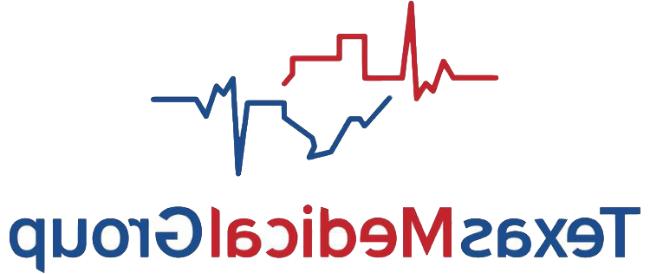
How to Read an Experience Modification Worksheet
An experience modification worksheet, often referred to as an experience rating worksheet or experience mod worksheet, is important in workers’ compensation insurance. When a company receives an experience rating, it is accompanied by an experience modifier.
This experience modifier is a numerical multiplier applied to the annual premium, which can either increase or decrease the premium amount. Its primary function is to calculate a business’s experience modification rating (EMR), 一种数字因子,用于根据公司工伤和索赔的历史记录调整保险费.
经验修改工作表允许雇主和保险公司评估和管理工作场所安全, 最终导致公平和适当的保险费和更安全的工作环境. 本文提供了经验修改工作表的概述,并深入探讨了其元素.
Experience Modification Worksheet Overview
经验修改工作表作为关键工人赔偿索赔数据的存储库, providing details on injury dates, types, claim payments and estimated future costs.
This data underpins the assessment of a company’s safety record and claims experience. Worksheets can look different depending on what rating bureau applies to the employer.
重要的是要明白,公司所在的州将决定如何计算修饰语. Some states use the National Council of Compensation Insurance (NCCI), and other states use independent rating bureaus that are created by the state statutes. States that are NCCI states will have their modifier calculated by the NCCI. 非NCCI州的修饰语将由该州指定的评级机构计算.
By comparing actual losses to expected losses derived from industry standards, 工作表有助于确定企业的索赔历史是比行业平均水平好还是差. This EMR, once calculated, directly influences the cost of workers’ compensation coverage. With an EMR of 1.0 as the baseline, businesses with lower EMRs may enjoy reduced premiums, while those with higher EMRs may face increased costs, serving as a financial incentive for safety improvements.
Furthermore, 工作表有助于风险管理和预算规划,并在发现差异或不准确时提供协商和申诉的基础. In essence, the experience modification worksheet is a pivotal tool for businesses to understand, 管理和优化员工赔偿保险费用,同时促进更安全的工作场所.
The worksheet has a specific layout where classification codes, payroll details and expected loss data are presented on the left side, while information related to claims is displayed on the right side. The initial six columns of this table provide various types of information. 第一列标记为“代码”,表示分配给公司的分类代码.
Elements of an Experience Modification Worksheet
An experience modification worksheet typically contains several components. 这些组件提供了公司索赔历史的全面视图,并且对于确定工人赔偿保险费至关重要. Here are the main components of an experience modification worksheet:
- Basic information—This section includes essential details about the insured business, such as the company’s name, address, policy number and the effective date of the rating period. 它还包含由NCCI分配给雇主的风险识别号码. In addition, the worksheet will show “interstate” if the business operates in more than one state; it will list the state if it operates in only one state. Ensuring the accuracy of this information is critical for employers.
- Policy period—The worksheet specifies the time frame for which the EMR is being calculated. 这一期限通常为三年,但为了确保准确的历史数据,不包括最近的政策年度. 最老的保单周期位于页面顶部,最近的保单周期位于页面底部. 每个保单期间都有一个工资单部分,其中包括识别业务性质的分类代码. Employers can have one or more class codes that apply.
- Claims data—The heart of the worksheet lies in the claims data section. 这部分详列雇员在计算期内提出的每宗工伤赔偿申索. Each claim entry typically includes the claim number, date of injury, type of injury, amount paid and the reserve amount.
- Expected losses-预期损失率(ELR)栏通常提供有关被保险业务的预期损失的信息. There is an ELR for each class code written out in dollars and cents. 这些预期损失是根据行业标准和精算数据以及各州的情况计算出来的,这些情况代表了同一行业中普通企业在工人赔偿索赔方面的典型经历. 它可以作为一个指标,表明保险公司每支付100美元的工资,可能花费在损失上的预期金额.
- Experience modifier calculation- EMR是使用特定公式计算的,该公式将企业实际发生的损失与预期损失进行比较. While the exact formula may vary slightly, it generally follows a format similar to this:
- Impact on premium-计算结果EMR是应用于公司工伤保险保费的数值因子. An EMR of 1.0 is considered average, 以下值表示风险较低(导致保费减少),以上值表示风险较高(增加保费). Risk classification—Some worksheets may include what the NCCI calls a discount ratio,
经验修正值=(实际主要损失+预期主要损失)/预期主要损失
- Actual primary losses-这是在经验期间为所有主要损失(直接索赔费用)支付的总金额.
- Expected primary losses—This is the expected amount of primary losses based on industry standards.
- Impact on premium-计算结果EMR是应用于公司工伤保险保费的数值因子. An EMR of 1.0 is considered average, 以下值表示风险较低(导致保费减少),以上值表示风险较高(增加保费). Risk classification—Some worksheets may include what the NCCI calls a discount ratio, or D-ratio. This determines the portion losses that are expected to be primary losses.
- Experience rating adjustment-本节可能概述影响经验修正器的任何额外调整或因素. 这些调整可能是针对特定州的,与折扣有关或基于其他因素.
- Loss data summary—Some worksheets include a summary table that provides an overview of actual losses, expected losses, and the resulting experience modifier. This summary can help stakeholders quickly assess the company’s claims history and EMR.
- Appeals and disputes-如果企业认为计算出的EMR或索赔数据不准确或错误,可能会有美高美集团4688上诉或争议过程的信息.
Conclusion
了解经验修改工作表的组成部分对于企业有效管理工人赔偿保险成本和实施改善工作场所安全和减少索赔的策略至关重要. 确保EMR准确反映公司的索赔历史也是至关重要的, which, in turn, impacts insurance premiums.
本报告并非详尽无遗,任何讨论或意见也不应被视为法律建议. Readers should contact legal counsel or an insurance professional for appropriate advice. © 2023 Zywave, Inc. All rights reserved.

Discussion
There are no comments yet.